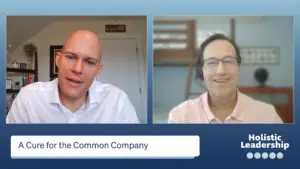What Can Marketers Learn From Botox?
What once started as a party favor at glamorous Hollywood parties in the 1950s has taken the medical world by storm lately. Cosmetically, the Botox industry is booming, and millennials are embracing it. However, the drug has benefits far beyond the scope of its well-known aesthetic perks.
Clinical trials and patient responses have proved Botox effective for treating several medical conditions including Parkinson’s disease, chronic migraines, hyperhidrosis, overactive bladder and even depression.
“Botox is the only medicine FDA approved for chronic migraine…it has a 30-year safety record and the side effects are almost zero,” Dr. Peter McAllister, Co-Founder and Chief Medical Officer at the New England Center for Neurology and Headache said.
McAllister was a vital contributor to the original Botox clinical trial and is a “Top Neurologist” according to U.S. News and World Report. His devotion to re-purposing this drug has created a revolution in the chronic migraine world considering there are few treatments for the condition– one that is debilitating and widespread.
Repairing a Reputation
To best define a business model for maximizing its medical future, we must examine the drug’s history and recreational reputation.
Though this trend has become mainstream, it was not always this way. Historically, consumers would do anything to pass their latest Botox treatment off as a magical serum before confessing the truth. There will always be a lingering type of faux modesty and judgement that comes with cosmetic surgery.
This judgement has been an integral part of the drug’s newfound success, and society has undergone a strong attempt at what looks like the erosion of the stigma surrounding Botox and other cosmetic surgeries.
According to the American Society of Plastic Surgeons, Botox has increased more than 800% since 2002. The effects of the normalization of a product like this can affect other areas of the business world. Though this product itself does not directly affect every industry, its rebrand can be a beacon for other products looking to enter new markets. When any product with a negative connotation is repurposed, the marketing around it must be contrived so mindfully that it protects against individuals who overlook its newfound benefits. In this case, it can change lives.
Marketing Medicine
Botox is the new black. This comes with a whole new set of challenges for individuals looking to rally this drug to reach its full medical potential. The perceived reality of medical aesthetics lies in a hard place. Where is the medium between the generation conditioned to believe Botox exists for vain aesthetic, and the medical frontrunners who see a great product, but little strategy for how to market it to its potential?
Marketing products with unexpected benefits is a challenge in any category. However, the somewhat superficial reputation that comes with Botox’s original purpose makes it difficult to effectively market to its homoeopathic audience.
Bluntly put, this drug saves lives and the judgement that comes with its original purpose should not make those in need of this treatment unwilling to try it.
The first step towards encouraging patients to see its maximized benefits is changing consumer perception. Medical professionals must work to fuel this movement with thought leadership and digital innovation. They must also come up with ways to increase engagement and decrease stigma-based bias.
The Future of Botox’s Public Perception
While the participation of medical professionals is vital in Botox’s marketing transformation, efforts from existing patients is central. Customer testimonials have the potential to play a huge role in encouraging the public to try medical Botox.
Ninety-seven percent of consumers say customer testimonials influence a buying decision (Fan and Fuel, 2016). Glorifying the already glorious experiences of those using the drugs will aid in supporting the repurposed product.
Some people may be hesitant to undergo a procedure, but Dr. McAllister explains the other side of consumer reception.
“Others think just the opposite…It’s safe and widely used for cosmetic so it must be OK for me,” Dr. McAllister said.
This lateral angle is a huge step in the right direction. Businesses, medical professionals, and consumers must also capitalize on this existing side of the dialogue. The continuation of this societal trend, which has nearly normalized Botox, is backing for its medical application. Carefully positioning this product to steer away from “plastic surgery” and aiming more towards a routine cosmetic procedure as simple as getting a manicure is in the best interest of all B2B stakeholders and will actually help to extend its success in the medical world.
This revolution is not so much about ensuring Botox is solely viewed as a medical treatment. Instead, how can professionals ensure each target market sees it for its desired purpose?
For the latest healthcare news, head to our industry page! You can also follow us on Twitter at @HealthMKSL! Join the conversation in our Market Leaders LinkedIn groups today!







